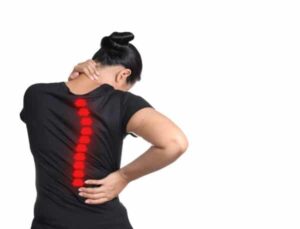 An abnormal sideways curvature of the spine is referred to as scoliosis. It is most commonly diagnosed in the early stages of adolescence.
An abnormal sideways curvature of the spine is referred to as scoliosis. It is most commonly diagnosed in the early stages of adolescence.
In the “sagittal” plane, the spine’s normal curves are found in the cervical, thoracic, and lumbar regions. During movement, the natural curves of the spine act as shock absorbers, distributing the body’s mechanical stress. Most of the time, scoliosis is defined as an abnormal curve in the spine’s “coronal” (front) plane.
Scoliosis can be classified by etiology into:
- Idiopathic
- Congenital
- Neuromuscular
When all other possible causes of scoliosis are ruled out, the diagnosis is usually given as idiopathic scoliosis.
Scoliosis affects more than 8% of adults over the age of 25, rising to 68 percent in those over the age of 60 due to degenerative changes in the spine.
There is a prevalence of 2% in the general population with a Cobb angle greater than 10 degrees.
During adolescence, doctors often discover adolescent idiopathic scoliosis, the most common form.
Symptoms
Scoliosis can cause a variety of symptoms, including:
- Unbalanced torsos
- hip that’s protruding outward
- The rib cage protrudes on one side.
- When bending forward, one side of the back is more prominent than the other.
- Scoliosis is often accompanied by a rotation or twisting of the spine. There is a noticeable difference in rib or muscle protrusion from one side to the other.
- Spinal curvature in the wrong direction
- body posture in the wrong direction, one shoulder raised higher than the other, clothing that doesn’t hang properly, with local muscular aches and pains
- local ligament pains and decreasing pulmonary function, which is a major concern in the progression of severe scoliosis.
The following subclasses are included:
A percentage of children under the age of 3 have scoliosis, which can develop at any time during this period.
It is estimated that 10% to 15% of all scoliosis cases in children are juvenile, and untreated curves can cause serious cardiopulmonary complications. Curves greater than 30 tend to progress, and 95% of these patients require surgical treatment. ‘Juvenile scoliosis’
It is estimated that 90% of cases of idiopathic scoliosis in children are found in adolescents, between the ages of 11 and 18.
An embryological defect in one or more vertebrae causes this form of scoliosis, which can affect any part of the spine. Because one part of the spinal column lengthens more slowly than the rest, the abnormalities in the vertebral column cause curvature and other deformities of the spine.
How often should you visit the doctor?
If you suspect your child may be suffering from scoliosis, make an appointment with your family physician right away at Doral Health and Wellness Multi-Specialty Clinic. The pain management experts will accommodate your concerns and assessment can be immediately perform and physicians plan protocols. Your doctor will prescribe proper medications and referral of treatment to Pain management experts or Physical Therapists.
Scoliosis appears gradually and rarely cause discomfort, mild curves may develop without you or your child realizing it. Teachers, friends, and sports teammates may be the first people to notice a child’s scoliosis, but this is not always the case. For further inquiries, kindly contact us at 718-DORAL-55.
